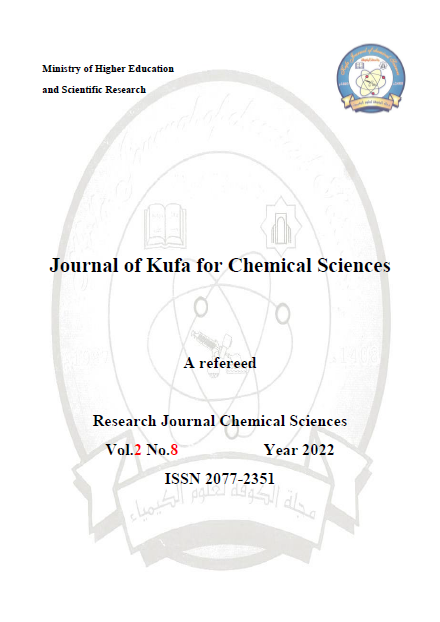Controlled-Release and Antibacterial Studies of Levofloxacin-Loaded (Gelatin-Poly Acrylamide) Hydrogel IPNs
Keywords:
Controlled-Release , Antibacterial Studies , Levofloxacin-Loaded , Gelatin-Poly AcrylamideAbstract
Interpenetrating polymer network Hydrogels (J1-J6) were synthesized from gelatin, acrylamide and polyethylene glycol by chemical crosslinking using Gluteraldehyde and bisacrylamide, the hydrogels were loaded with levofloxacin. The slow release of levofloxacin was studied by using UV spectroscopy at temperature 37˚C and with different pH (distilled water pH=6.8, SGF pH=1.2 and in SIF pH=8.2), The swelling of polymers in these solutions was also studied. The results exhibit that the pH has great effect on swelling ratio of the IPN hydrogels and release rate of levofloxacin, the hydrogels were showed high swelling ratio and fast release rate with low and high values of pH (SGF and SIF) compared with neutral solution. The toxicity of hydrogels was studied which is shown that the prepared hydrogels are nontoxic. The hydrogels –levofloxacin delivery were followed as antibacterial activity by Disk Diffusion Testing on Mueller-Hinton Agar and Broth microdilution methods over a period of four consecutive days Against two types of bacteria (Streptococcus mitis and Escherichia coli). The results showed the continuous release of the Levofloxacin from the polymers with effectiveness as an antibacterial for four consecutive days.
Downloads
Downloads
Published
How to Cite
Issue
Section
License
Copyright (c) 2023 Journal of Kufa for Chemical Sciences

This work is licensed under a Creative Commons Attribution 4.0 International License.
Open-access Statement
The journal « Journal Of Kufa For Chemical Sciences» provides immediate open access to its content on the principle that making research freely available to the public supports a greater global exchange of knowledge. Full-text access to scientific articles of the journal is presented on the official website in the Archives section.
This is in accordance with the BOAI definition of open access. The licensing policy is compatible with the overwhelming majority of open access and archiving policies.
The journal «Journal Of Kufa For Chemical Sciences» is an open access journal, which means all its content is freely available without charge to the user or his/her institution. Users are allowed to read, download, copy, distribute, print, search, or link to the full texts of the articles, or use them for any other lawful purpose, without asking prior permission from the publisher or the author as long as they cite the source.The journal is licensed by Creative Commons Attribution International( CC Attribution 4.0) .


